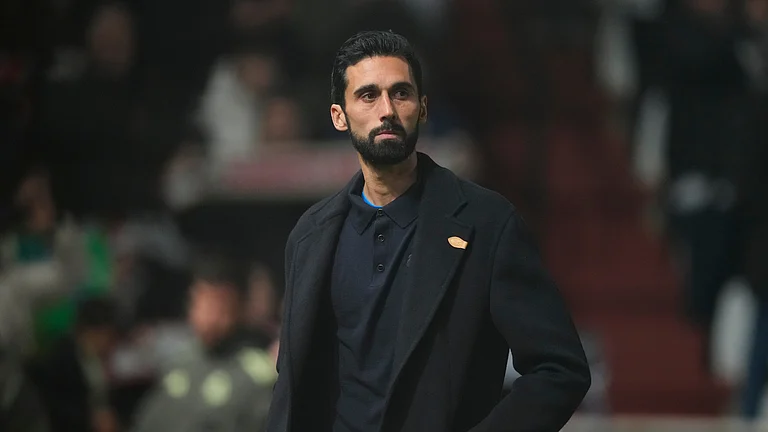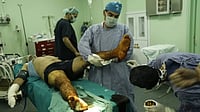Just around the time when the country celebrates the election of its first Adivasi president, a recent court judgment in Bastar again underlines the disturbing truth about the most deprived community of the country. On any other occasion, a judgment announcing the acquittal of the accused would call for celebration, but not the images that emerged from Jagdalpur.
They came out in herds, one after another, from the Jagdalpur central jail, carrying their old bundles, looking for any familiar faces around. The city had changed in the last five years, and so did they, beginning a long journey to their village homes.
As many as 121 Adivasis were accused of participating in a major Naxal ambush that had killed 25 Central Reserve Police Force (CRPF) personnel in April 2017 in the Burkapal area of Sukma district in the south Bastar. Soon after the ambush, these Adivasis, residents of neighbouring villages, were arrested and lodged in jail. While seven of them were minors and got bail during the trial, one died in prison. Most of them were under 30 years of age.
They eventually came out on July 16 after spending over five years in jail when a special court of the National Investigation Agency (NIA) did not find any evidence about their involvement in the incident.
It’s an easy guess how these Adivasis, who lost crucial years of their lives, will gather themselves to trust their governments again. They are not alone. Bastar has seen innumerable instances in the past of innocent Adivasis being framed in false cases, lodged in jail, killed in fake encounters, abused and raped. Most of them may not be even aware that a member of their community has just been elected to the highest office of the Republic.
Elusive justice
Justice eludes Bastar Adivasis even in cases where judicial enquiries have clearly indicted the security forces. Consider this. Exactly 12 years ago, on June 30 2012, a joint team of the CRPF and the Chhattisgarh police killed as many as 17 Adivasis in three adjoining villages of Bijapur district. The forces termed them Naxals, but the ground evidence and their relatives’ testimony said otherwise.
Bowing to public pressure, the state government appointed a judicial commission under a retired High Court judge whose report came out in December 2019. The commission noted that the deceased was not Naxals but innocent Adivasis. Worse, the forces opened fire without any provocation, indicating that it was not a shootout but one-sided rain of bullets. However, the government is yet to act upon the commission’s report as the victims’ relatives await the prosecution of the CRPF men.
Surrendered Naxals were actually Adivasis
Another common form of exploitation is fake ‘Naxal surrenders’ when Adivasis are often made to pose for media in police stations. While such surrenders are a regular feature, 2014 saw an unprecedented surge as between June 1 and November 28, as many as 377 alleged Naxals surrendered in Bastar, with 155 in November alone.
However, when this correspondent scrutinised police records and interviewed these “surrendered” Maoists, it emerged that at least 270 of the 377 were ordinary villagers or routine criminals. Not one of the 377 had surrendered with a weapon, and no one received relief or rehabilitation under the various government schemes for surrendered Naxals.
Consider these instances. Chitu Sori (25) of Kodenar village in the Kondagaon district was a farmer. On June 26, police declared that he had “surrendered” with several other villagers. However, he was soon back to his village.
Similarly, the police declared that several residents of Atulpara village in Sukma “surrendered” on August 19. Among these included Barse Deva, Madkam Deva and Podiyam Deva. Like many Adivasis of Bastar, they had long-pending warrants against them, as police often book villagers on the slightest suspicion. These warrants were never executed but, they said, the police proposed that if they “surrendered”, the warrants would be withdrawn.
Significantly, several officers of the Chhattisgarh police were not comfortable with these surrenders. Earlier, on January 10, 2014, then Chhattisgarh DGP Ramniwas had written to all Inspector Generals and Superintendents of Police asking them to avoid the hype around non-deserving surrenders, saying it “confused our ground police personnel to bear wrong priorities” and “disorients” them from their focus.
The 377 surrendered persons fell under four broad categories:
- “Naxali sahayogis” or people who have occasionally helped the rebels by choice or force with rations or shelter;
- People with warrants, who were pressured to surrender as a quid pro quo for withdrawal of cases;
- Former Naxals, who left the rebel camp long ago and were now leading a family life;
- Active Maoists or those belonging to banned front outfits.
Only those under the last category were eligible for surrender. The police strategy was that by making ordinary people pose before the media and return home with a few thousand rupees, they would be able to buy some loyalty of the Adivasis and create a divide between them and the Naxals. The police didn’t want to admit that it also threatened the life of these villagers, as they would now be seen as suspects by the Naxals.
There are countless such instances in central India that demand a special focus on the Adivasi community. They have been asking for various constitutional rights, including the implementation of Schedule V in their area. India’s first Adivasi President has a major task ahead to meet the expectations of her community.


























